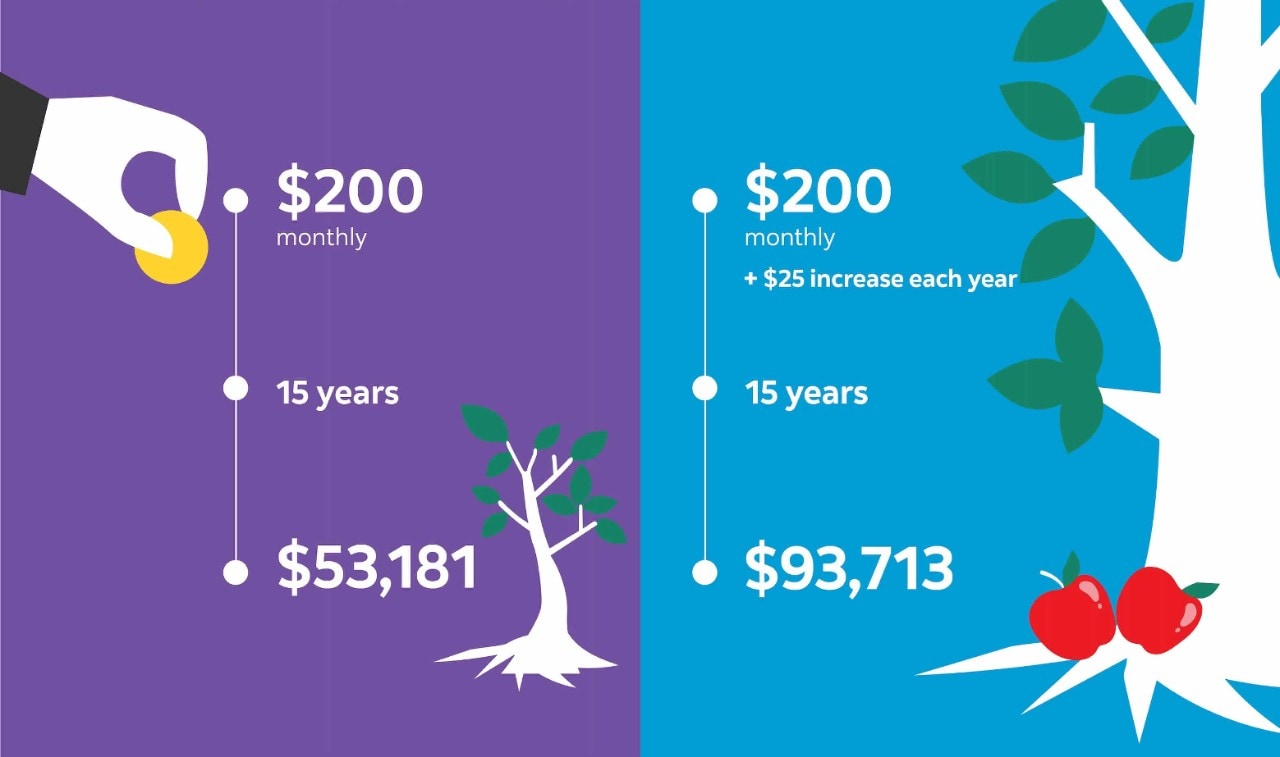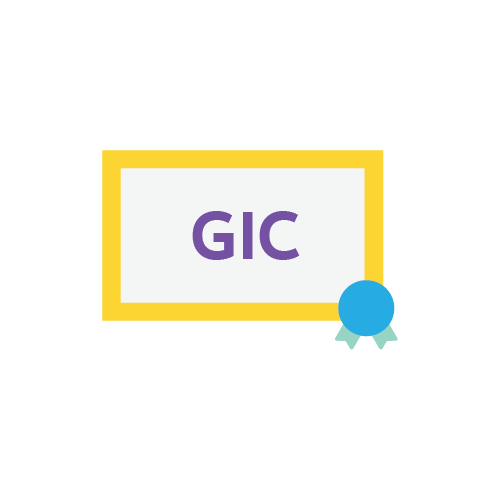If you can afford to invest a small amount each month as a student, it could pay off big in the long run. That's because you could see your money grow over the next few decades.
While investing may sound complicated, with new tools and resources, it's never been easier for students to watch their money grow. Here are a few things that you should know about that can help you with your investment journey.
Setting aside money in your student bank account is always a good start, but you should determine your goals if you plan to invest. Think about your short- and long-term goals since your investment strategy will affect those plans.
- Short-term savings goals
- Paying down debt
- Building an emergency fund
- Buying a car
- Taking a vacation
- Paying off your student debt
Short-term saving goals are typically any expense you need to pay for in the next one to five years. Since that time frame is short, you don't want to invest your money into anything risky. The last thing you want is for your investments to drop in value right before you need the money.
- Long-term savings goals
- Buying your first home
- Retirement savings
- Buying a car
- Investment property
- Your wedding
Admittedly, student investors should focus on their short-term saving goals. That said, knowing what's important to you for your long-term plans can help you budget. Since long-term investments usually have a time frame of five years or more, you can afford to take more risks with your investments. That's because you'll have time to recover if there's ever a market drop.
You can create an account online at your financial institution and start investing right away. Alternatively, you can book a meeting with an advisor in person or over the phone. They'll be able to open an account for you and recommend products based on your goals.
Another solution is to consider a robo-advisor. These companies have portfolios available based on your risk profile. Finally, anyone who wants to take a hands-on approach can open an Online Direct Investing account to manage their portfolio on their own.
If you're ready to invest, one of the best first steps for students is to set up an automatic savings plan. This allows you to invest regularly, so your portfolio always has the potential to grow.
A pre-authorized contribution (PAC) over 15 years example

For illustrative purposes only. The example uses a hypothetical rate of return of 5%, assumes reinvestment of all income, compounded annually and does not include transaction costs, fees, or taxes. The example does not reflect actual returns or future value of an actual investment.
There are multiple accounts you may have access to. Each one has its pros and cons, so it's best to have a general idea of how they work, so you can choose the one that makes the most sense for your investing strategy.
- Tax-Free Savings Account (TFSA)
- Registered Retirement Savings Plan (RRSP)
- Non-Registered accounts
Although you don't get a tax break with your TFSA contributions, any capital gains or interest earned is completely tax-free when you withdraw the funds. This is a very popular account for students to use since all you need to qualify is to be is a resident of Canada, have a valid social insurance number and be 18 or older. The amount of contribution room you get is based on what the government has designated for the year. Read this TFSA guide for more details.
Although the differences between an RRSP and TFSA are subtle, they can impact your investing decisions, so make sure you read up on them. Also, note that with both accounts, you can purchase most types of investment products within them.
Your RRSP is meant for retirement savings, but it can also be used to purchase your first home. For every dollar you contribute, your taxable income is reduced by an equal amount. This may sound appealing, but many students are in a low tax bracket, so the benefit is minimal. You only gain RRSP contribution room after you start working. The amount of room you get is based on 18% of your previous year's income and it carries forward if unused. For more information, read this guide to RRSPs.
There are no limits and rules with non-registered accounts. However, any capital gains or interest earned are fully taxable. Generally, most students will prefer to max out their RRSP and TFSA before using a non-registered account.
The best investment options for students will depend on your individual goals. Once you understand how different investment products work, you can purchase the appropriate ones for your portfolio. The most popular investment products are:

1. Guaranteed investment certificates (GICs)
Guaranteed investment certificates (GICs) are a safe investment option since your principal investment is guaranteed. They're protected in two ways:
- By the bank issuing your GIC. Just like the name implies, a GIC is a guaranteed investment. Your bank assumes any liability, so your principal is always guaranteed. The interest you earn can also be safe if you go for a fixed rate.
- By the Canada Deposit Insurance Corporation (CDIC). As long as a CDIC member issues your GIC, the CDIC has your back — up to $100,000 per eligible account — should that institution default.

2. Bonds
Another safe investment option is bonds. The most reliable ones are issued by governments and municipalities to raise money. You're essentially lending them money in return for interest.

3. Stocks
Individual stocks are appealing since it allows you to buy part of a company. When that company performs well, the stock price increases. However, if the company doesn't meet expectations, its market value could drop. In other words, stocks can give you a high return, but you could also lose money. Investing in stocks makes sense for long-term investors, but it's always a good idea to diversify your portfolio.
Although learning about how to trade stocks can be simple, it's important to understand what makes stock prices go up and down, so you can make informed investing decisions. A good way to get into stocks is to start with a Scotia iTRADE® practice trading account. This will allow you to get used to buying and selling stocks without using any real money.

4. Mutual funds
Mutual funds combine dozens of stocks and bonds into a single fund. This gives you access to a diversified and professionally managed portfolio. What makes mutual funds appealing is that there's a fund for just about every goal. For example, you could choose a mutual fund that gives you access to global investments or one that focuses on sustainability.

5. ETFs
Exchange-traded funds (ETFs) are similar to mutual funds since they're a single fund that combines stocks and bonds. The major difference is that ETFs typically track an index and use a passive approach where most decisions are made with an algorithm. Although ETFs are less expensive to own than mutual funds, you need to purchase them yourself via a brokerage account.
It's worth mentioning that cryptocurrency and non-fungible tokens (NFTs) have become popular investment products in recent years. However, these products are highly volatile, with a high risk of losing your entire investment. So, if you're interested in these products, do some extra research to ensure you're investing responsibly.
While investing as a student is a great idea, there are also a few things you can do right away to put yourself in a better financial position.
- Focus on your education. For many people, the best investment is themselves. Focus on your studies since a high earning potential can go a long way.
- Pay off any high interest debt. If you have any outstanding high interest debt, such as credit card debt, paying it off should be your priority.
- Build your emergency fund. A good rule of thumb is to set aside three months' worth of expenses. This way, your emergency fund can protect you in case an emergency comes up, such as a job loss or unexpected medical expenses.
If you're in a position to start investing as a student, you can set yourself up on the right financial path. Not only will you by saving for your goals, but you could also see your investments grow if you were to invest regularly.
Remember, there's no quick way to reach your goals. Take the time to learn more about investing since it's a life-long journey.


